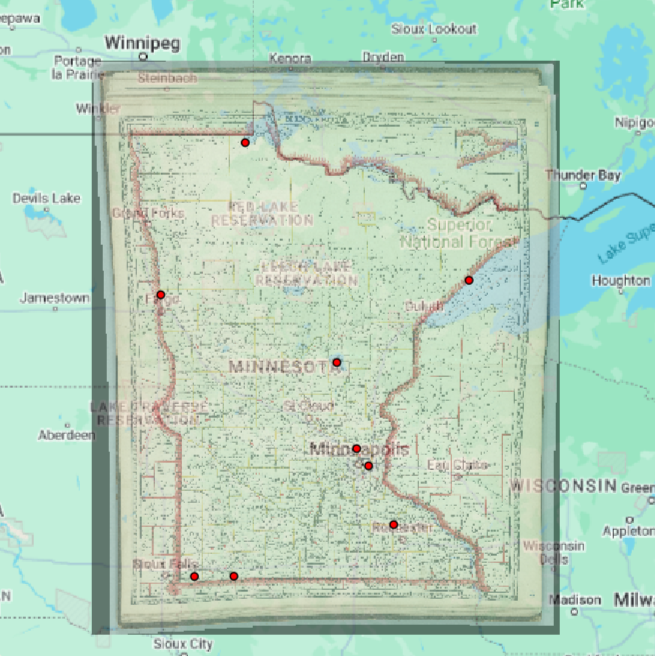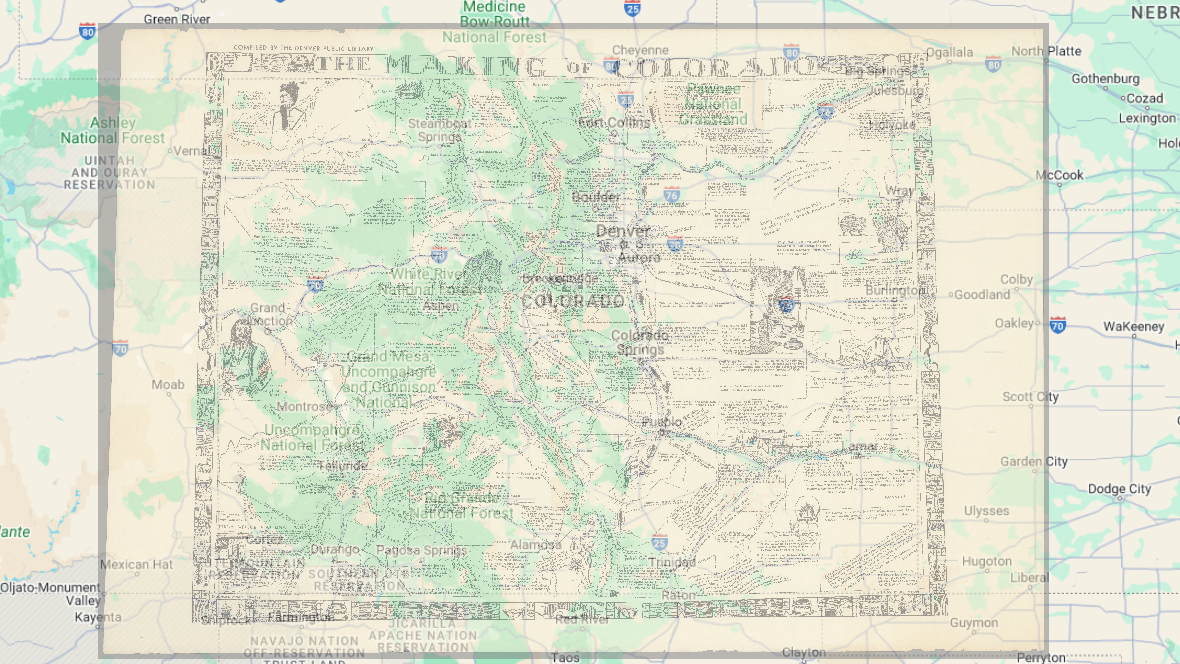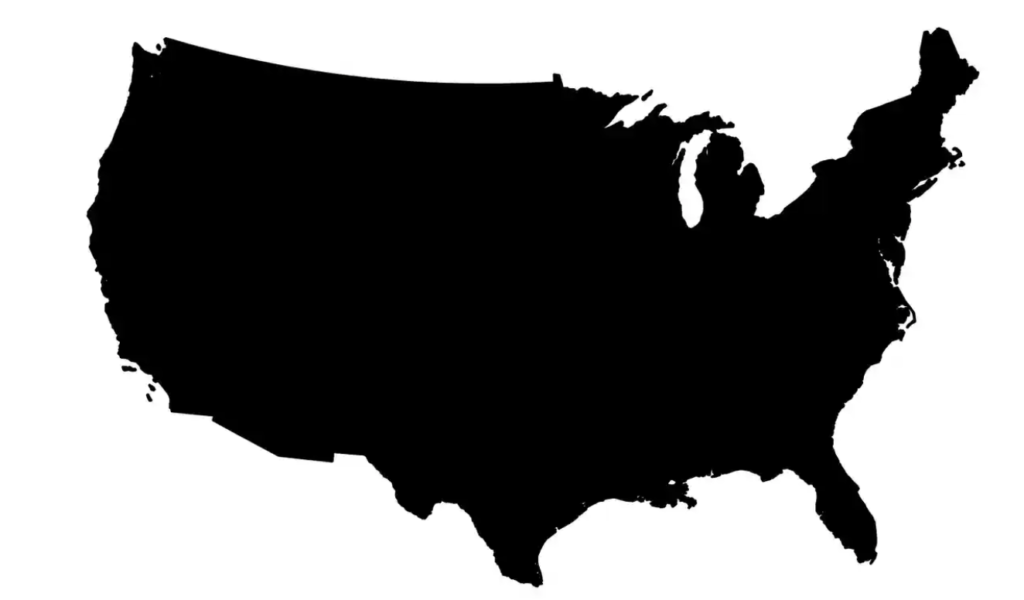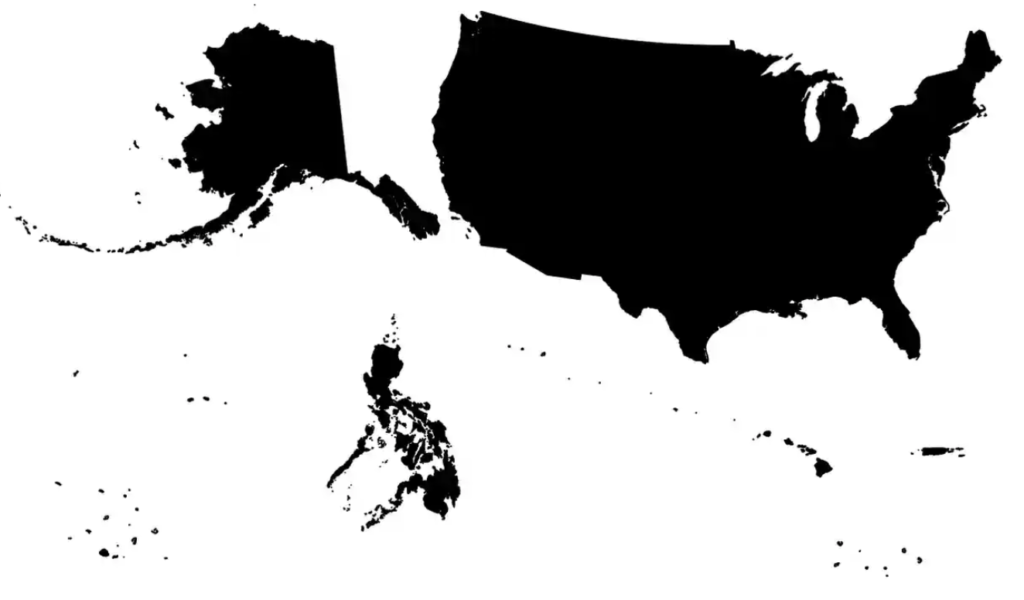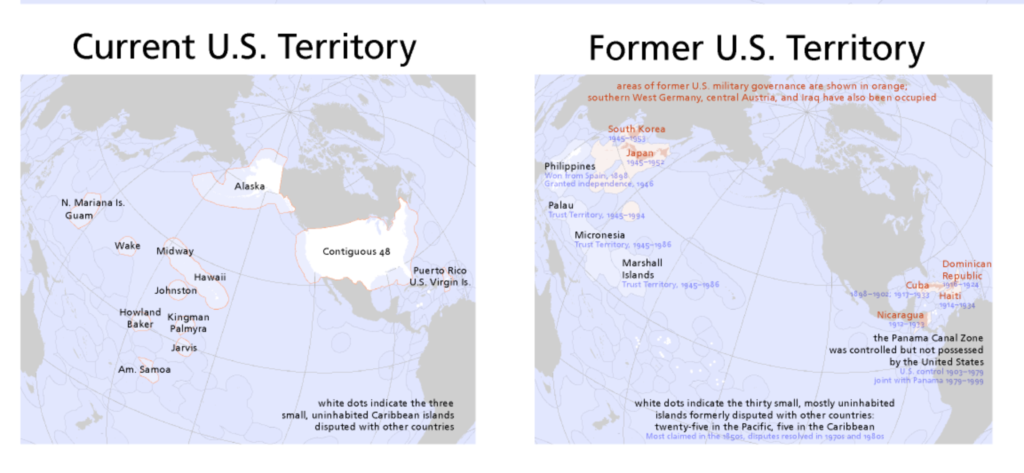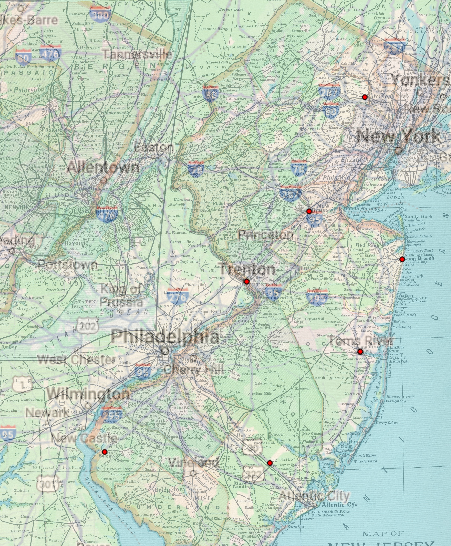The prominent change from a typical map to a general outline was a great choice for the author attempting to convey his message about borders; a map often full of colors, topography, bathymetric elements, and other cartographic features is turned upon its head and into an all-black outline of an empire–one that many even within the United States do not know about. The process of simplifying these maps into contrasts between dark and light help Daniel Immerwahr to convey his message efficiently. Instead of taking away the focus of readers with colors, minor details, names, and other typical features of maps, Immerwahr turns all U.S. states and territories into black outlines on a white background. Comparing this to the “logo map”, as he calls it, a profounding effect is set for the viewer. The two maps referenced are placed below:
Immerwahr, Daniel. “How the US Has Hidden Its Empire.” The Guardian, Guardian News and Media, 15 Feb. 2019, www.theguardian.com/news/2019/feb/15/the-us-hidden-empire-overseas-territories-united-states-guam-puerto-rico-american-samoa.
The top image is what Immerwahr refers to as the “logo map”–a traditional representation of what one thinks about when thinking about the United States. The lower image, full of dots and including two STATES Alaska and Hawaii, is the true representation of U.S. control on earth. I myself look at the lower image and struggle to name nearly any territory besides those granted the right to be called a state. But why exactly are these not typically portrayed in a map of the United States? Immerwahr argues for an issue that has loomed over the United States for centuries: racism.
After finishing the article and comparing the two maps listed above, Bill Rankins cartography of the U.S. territories was a very interesting read. It contained numerous cartographic elements to help portray a more sophisticated picture of Immerwahrs claim of the United States being an empire. Shown below:
Rankin, Bill. “Radicalcartography.” Radicalcartography, www.radicalcartography.net/. Accessed 3 Feb. 2024.
Rankin shows county lines, land boundaries, Indian Reservations, governmental control of land, and disputed areas of land between countries–a fascinating project. Names of territories, how they are governed, and their habitation are all included. Importantly, it puts purpose and places to the confusing black dots laid out by Immerwahrs conclusive map of U.S. territories (shown below).
First reading and observing Immerwahrs foundation for the U.S. dominance of the world is later enhanced by Rankins further dive into each territory and its importance; or lack thereof. The absence of such territories from typical U.S. maps routes back to underlying issues of racism, and helps to maintain a feeling of connectedness for the mainland–a critical point for politics.



